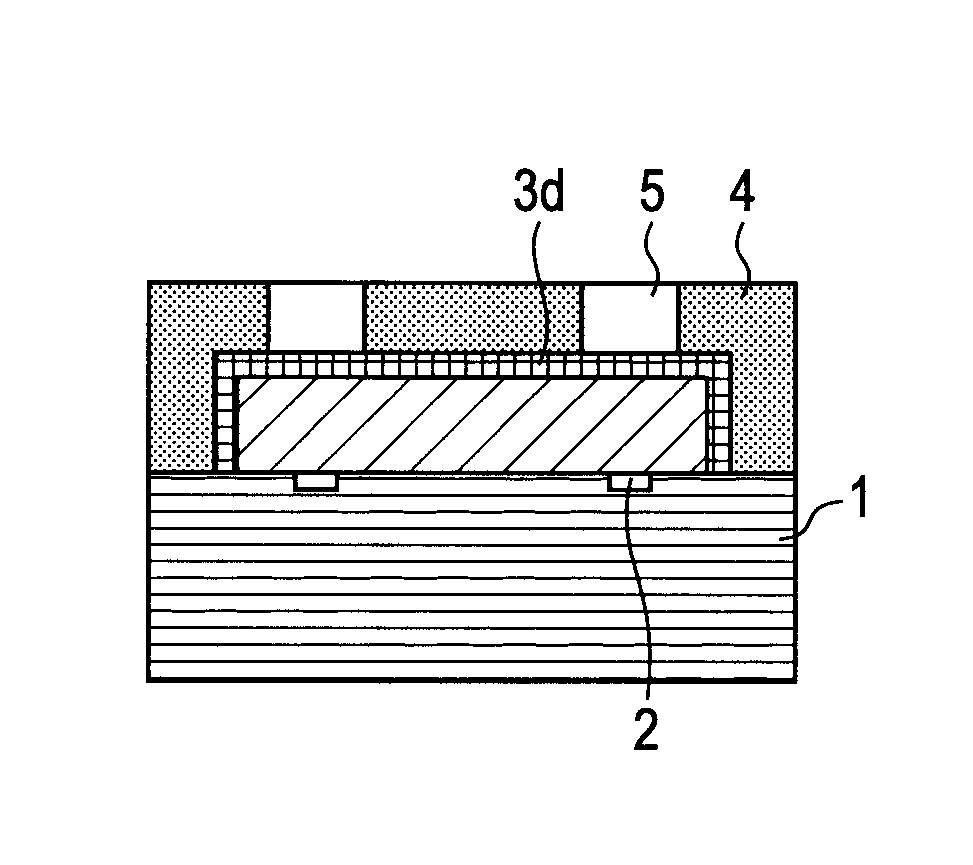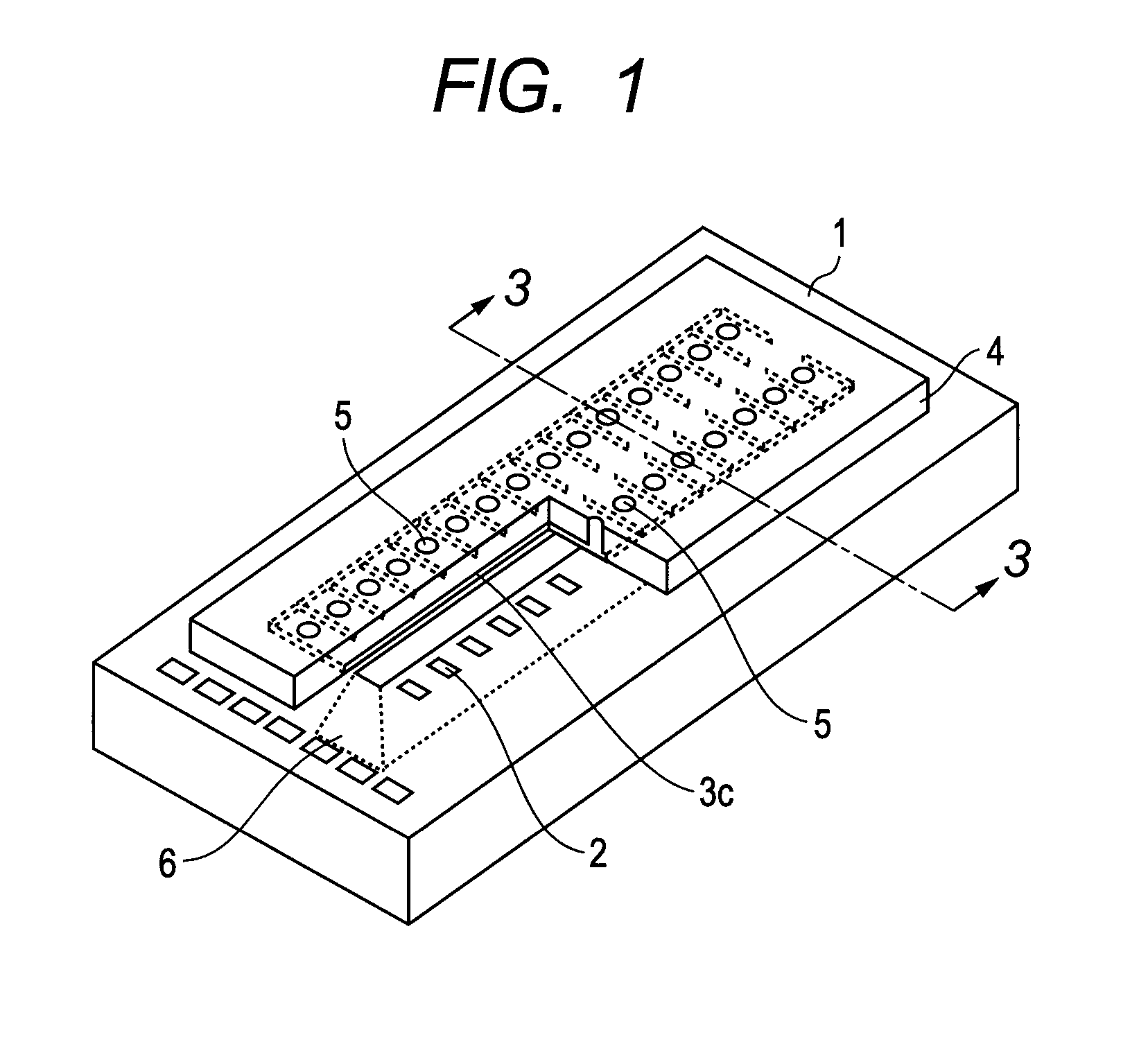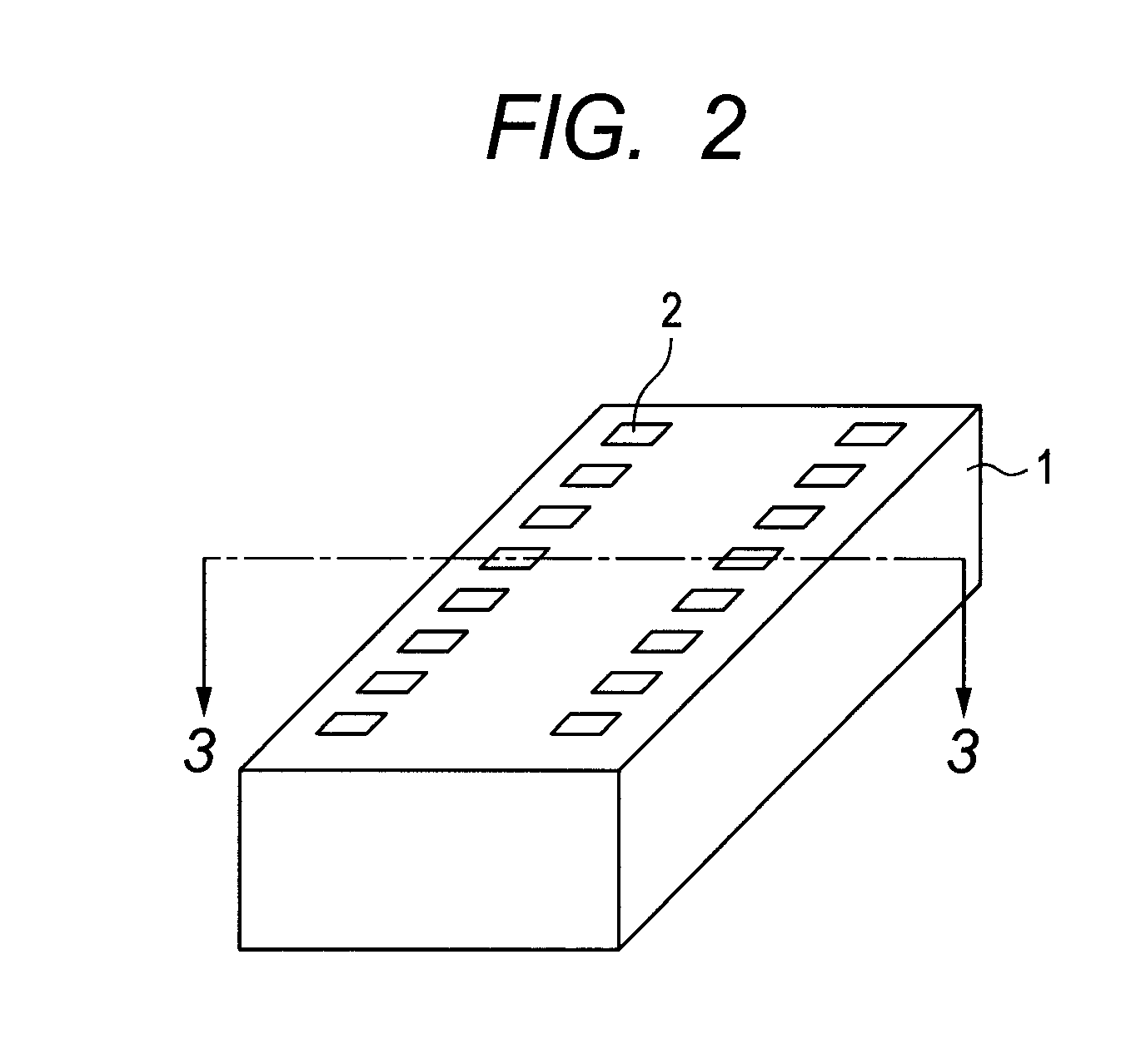Process for producing ink jet head
a jet head and ink technology, applied in the field of ink jet head production, can solve the problems of low solvent resistance of alkali-developing positive resists, low sensitivity, and large energy consumption, and achieve excellent sensitivity and resolution
- Summary
- Abstract
- Description
- Claims
- Application Information
AI Technical Summary
Benefits of technology
Problems solved by technology
Method used
Image
Examples
example 1
[0058]An ink jet head was produced according to the steps illustrated in FIGS. 3A to 3H. A substrate 1 illustrated in FIG. 3A was first provided. In this Example, an 8-inch silicon substrate provided with an electrothermal conversion element (heaters composed of HfB2) as an energy-generating element 2 on the silicon substrate and a laminated film (not illustrated) of SiN+Ta at forming sites for an ink flow path 3c and an ink flow path forming layer 4 was provided.
[0059]An iP-5700 resist (trade name, product of TOKYO OHKA KOGYO CO., LTD.) that is a positive resist of the NQD type was applied on the substrate 1 by a spin coating method. Thereafter, baking was conducted for 3 minutes at 90° C., thereby forming a positive resist layer 3a (FIG. 3B). Incidentally, the film thickness of the positive resist layer 3a after the baking was 7 μm.
[0060]The positive resist layer 3a was then pattern-exposed in an exposure amount of 2,000 J / m2 through a photomask by means of an i-line stepper (manu...
example 2
[0071]An ink jet head was produced in the same manner as in Example 1 except that a chemically amplified positive resist composed of the following composition was used as the positive resist to form a positive resist layer 3a.
[0072]
Polyhydroxystyrene 60% of the hydroxyl100 parts by massgroups of which had been substituted bya tert-butyl group (compound representedby the following formula (4) (n:m = 60:40))SP-172 (trade name, products of ADEKA 5 parts by massCORPORATION)SP-100 (trade name, products of ADEKA 2 parts by massCORPORATION)Ethyl lactate150 parts by mass.Formula (4)
[0073]The ink jet head was observed through a light microscope. As a result, deformation of the ink flow path 3c was not observed, but the ink ejection orifice 5 was somewhat deformed, which was however such that no problem was caused in actual use. In addition, no resist residue was observed in the ink ejection orifice 5 and the ink flow path 3c.
example 3
[0074]An ink jet head was produced in the same manner as in Example 1 except that a 10% by mass triethylene glycol divinyl ether solution was used as the coating agent in place of the 10% by mass trimethylolpropane ethoxylate trivinyl ether solution. Incidentally, the solvent of the solution was the same as in Example 1. The ink jet head was observed through a light microscope. As a result, deformation of the ink ejection orifice 5 and the ink flow path 3c was not observed. In addition, no resist residue was observed in the ink ejection orifice 5 and the ink flow path 3c.
PUM
 Login to View More
Login to View More Abstract
Description
Claims
Application Information
 Login to View More
Login to View More - R&D
- Intellectual Property
- Life Sciences
- Materials
- Tech Scout
- Unparalleled Data Quality
- Higher Quality Content
- 60% Fewer Hallucinations
Browse by: Latest US Patents, China's latest patents, Technical Efficacy Thesaurus, Application Domain, Technology Topic, Popular Technical Reports.
© 2025 PatSnap. All rights reserved.Legal|Privacy policy|Modern Slavery Act Transparency Statement|Sitemap|About US| Contact US: help@patsnap.com



